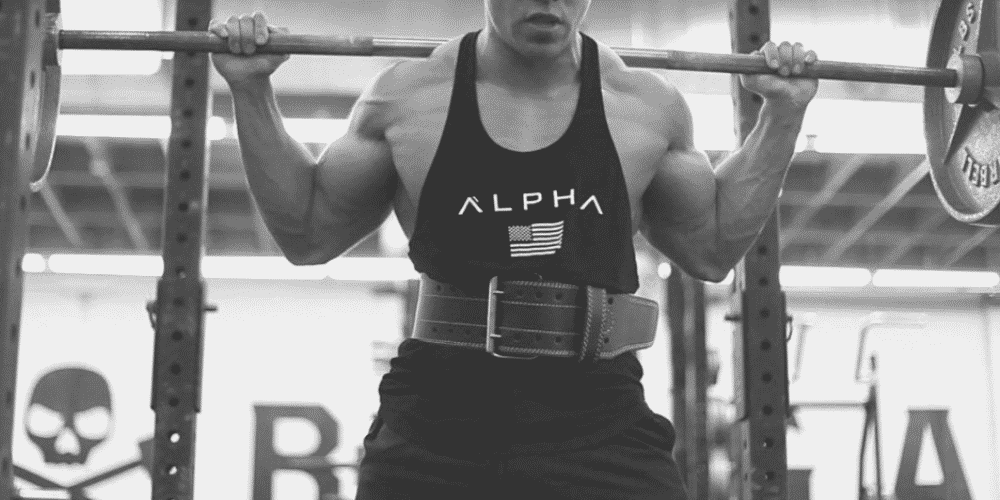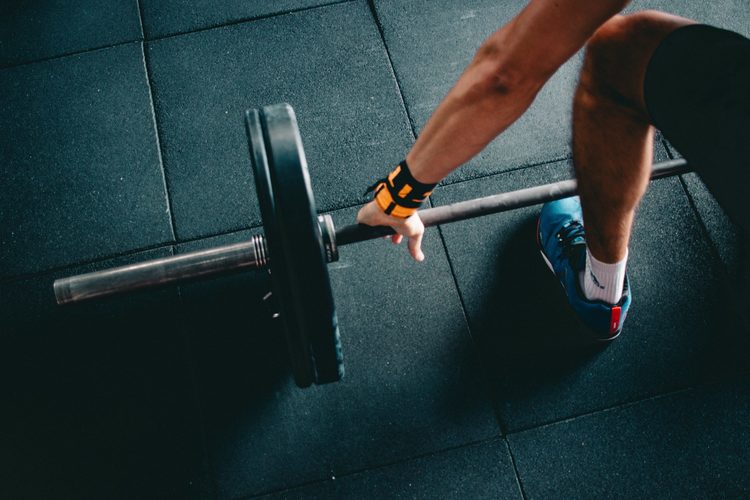Key Differences
- Powerlifting belts are either 3 or 4 inches wide. Weightlifting belts can be all the way to 6 inches.
- Most powerlifting belts are either 10 mm or 13 mm thick. Weight lifting belts can vary in thickness but none go past 10 mm or 11 mm.
- Powerlifting belts are made of genuine high-grade leather. Weightlifting belts are mostly made of high-quality Nylon with some other fabric.
- Powerlifting belts usually have either a prong system or lever buckle. Weightlifting belts do have prong systems but the most common is Velcro.
- A powerlifting belt is for strength movements. A weightlifting belt serves the same purpose but to a lesser extent.
The weightlifting world can be confusing at times.
So many different terms for accessories that look similar. This fact is not truer than for the world of lifting belts.
There are bodybuilding belts, weightlifting belts, and powerlifting belts. But what’s the difference between all these types?
More importantly, which belt is perfect for you?
We’ll be comparing the powerlifting belt vs weightlifting belt in this article. I will go over the key factors for each type of belt and how they differ. Further, I’ll give you a breakdown of what you should get depending on how you’re planning to use your belt.
What is the Difference Between a Powerlifting Belt and a Weightlifting Belt?
We’ll compare weightlifting belts and powerlifting belts based on key factors like width, thickness, the belt material, types of exercises, safety and comfort level.
Belt Width
We talk about the width of a lifting belt over and over again on this site. It’s a hotly contended topic when it comes to the lifting community. Why, you ask?
The width of a belt is how tall the belt appears on your abdomen.
If you are a regular gym goer, you’ll notice some lifters with wide belts and others with smaller ones. So how do you distinguish between a powerlifting belt and a weightlifting belt?
Powerlifting Belt
Powerlifting belts are either 3 inches or 4 inches. Every powerlifting belt will have the same uniform width from front to back. Powerlifting belts have no taper or wing design. Whether you choose 3 or 4 inches depends on the height and size of your torso. The taller you are, the more width you need to cover your abdominals and lower back completely.
3 inch vs 4 inch Powerlifting Belt – What Width Should I Get?
Weightlifting Belt
On the other hand, weightlifting belts can be all the way to 6 inches. The difference here is weightlifting belts are not uniform. They will taper to the front with a focus on keeping the lower back stable. The front will be 4 inches and the back will grow to 6 inches. Some people like the added comfort and coverage of tapered weightlifting belts.
4 inch vs 6 inch Weightlifting Belt – What Width Should I Get?

Belt Thickness
In general, the thicker the belt, the more you can brace.
The thickness of your belt is critical for safe and effective lifting. Strongmen and elite powerlifters love thicker belts because they can lift more.
Powerlifting Belt
Most powerlifting belts are either 10 mm or 13 mm thick. The 10 mm variant is the most popular among powerlifting athletes. At 10 mm, the thickness provides enough rigidity to brace against without hindering performance. Any powerlifting belt at 13 mm will be overly stiff for most fitness athletes.
10mm vs 13mm Belt – What Thickness Should I Get?
Weightlifting Belt
Weightlifting belts can vary in thickness but none go past 10 mm or 11 mm. Unless the weightlifting belt is a leather model, thicknesses are not always advertised. One of the most popular weightlifting belts on Amazon has only 5 mm as the thickness. Indeed, most weightlifting belts will be at the 5 mm thickness mark unless they’re leather.
Belt Materials
The material of your lifting belt will determine its durability and rigidity.
Powerlifting Belt
Powerlifting belts are always made of genuine high-grade leather. In addition, to help with comfort, most powerlifting belts will have a suede lining on the inside. The leather is usually stiff to add to the bracing ability of the belt.
Weightlifting Belt
Weightlifting belts can vary in their type of material. The most popular is high-quality Nylon with some other fabric. The Nylon does reduce durability but greatly enhances comfort. There are also some belts made from Neoprene but not worth the quality. Some weightlifting belts have combinations of leather and Nylon. The combination adds support and width, but they are not as stable.
How does the Belt Fasten?
The fastening mechanism doesn’t make a huge difference to your workout.
Powerlifting Belt
Powerlifting belt usually has either a prong system or a lever buckle. The prong system can be single or double. There is no bigger benefit from single to double, but most lifters prefer single versions due to its simplicity.
Lever buckle systems are popular among powerlifters due to their quality and feel. These belts are easy to take off and put on. However, they can be hard to adjust for waist size.
Weightlifting Belt
Some weightlifting belts do have prong systems but the most common is Velcro. The Velcro and Nylon combination helps weightlifting belts with better comfort. The problem with Velcro is the lack of durability. If you ever owned a pair of Velcro shoes, you will know how easily they can lose traction.

What Exercises are Best for Each Belt?
Powerlifting Belt
A powerlifting belt is for strength movements. Due to the material and thickness, a powerlifting belt will be uncomfortable at first.
With a rigid powerlifting belt, you can create more bracing power to contract against. This creates higher intra-abdominal pressure and increases core stability.
Most trainees can lift 10% more with a powerlifting belt. Lifters can break through plateaus easily.
Weightlifting Belt
In contrast, a weightlifting belt serves the same purpose but to a lesser extent. Don’t get me wrong, a weightlifting belt will provide enough stability to help you brace.
You will lift more and have better workouts with weightlifting belts. However, you may not experience the same level of support. In turn, most lifters agree they can lift more with a powerlifting belt than a weightlifting belt.
Using A Lifting Belt For Bench Press (10 Benefits, 3 Drawbacks)
Do I Need a Powerlifting Belt or Weightlifting Belt?
The ultimate question you must ask yourself is which belt is best for you? Weightlifting belt or powerlifting belt? You can’t assume that since your friend uses a powerlifting belt it will suit your needs. Your preference will almost always be different than your friend or favorite lifter. This guide to help you narrow down which type of belt is ideal for your needs.
Start with what kind of exercises and workouts you plan to do with the belt.
- If you’re a strength trainee, go for the powerlifting belt. For Olympic movements and CrossFit athletes, a weightlifting belt is better.
- If you plan to compete in competitions bear in mind only some lifting belts meet standards. Most powerlifting belts and some weightlifting belts meet IPF and USAPL standards. Make sure you know what the standards are before purchasing your lifting belt.
- What if you’re planning to do both types of movements? I think you’re still suitable for a weightlifting type belt.
Once you know what type of belt is best for you use comfort and safety to determine your other features.
If you have a bad back, you can get a weightlifting belt that tapers to give more padding in the lumbar area. Keep in mind that a stiffer powerlifting belt will require time to break in. Sometimes the belt can bruise your hips if the leather is not soft.
Powerlifting Belt vs Weightlifting Belt – Comparison Chart
Use the following table to help visualize the comparison of powerlifting belt vs. weightlifting belt.
| Feature | Powerlifting Belt | Weightlifting Belt |
|---|---|---|
| Width | Varies from 3 to 4 inches. | Usually 3 to 6 inches. |
| Taper | Uniform width all around. | Usually some taper with more coverage in back. |
| Thickness | Most popular is 10 mm, but some lifters use 13 mm. | Ranges from 4 mm to 11 mm. |
| Material | Always stiff leather with suede Interior. | Softer leather with suede, nylon, neoprene, or a combination of all three. |
| Fastening Mechanism | Single prong, double prong and more often a lever buckle. | Usually Velcro strap. Some belts use prong and lever buckle systems. |
| Best Suited Exercises | Strength exercises include forms of squats, deadlifts, and bench presses. | Dynamic lifts including Olympic movements and CrossFit workouts. |
Final Thoughts
With this detailed comparison of weightlifting belt and powerlifting belt, you should be able to determine which type of belt is suitable for you. Use the type of workouts you plan to do as a base. From here you can move to the other belt features.
Once you decide on the type of lifting belt, next you need to understand the sizing of a lifting belt. Here is our very useful guide on measuring for a lifting belt and understanding what size lifting belt should you get.
If you have any other questions, share them in the comments below.
Do more with lifting belts:





